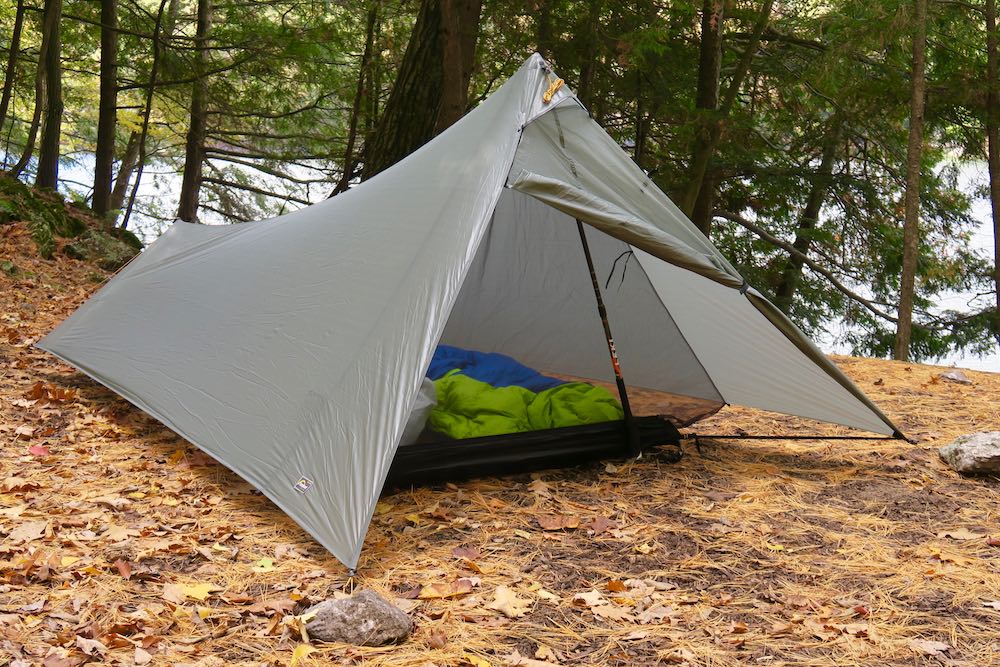Campers count on their tent for protection, so store her properly during the winter and ensure her long life and continued performance. Take care of her, and she will take care of you!
The summer is over and the fall will quickly flash by. With much painful anguish, you reluctantly realize it’s time to pack up your camping gear for the winter. Let’s discuss the best ways to store your nylon gold for the season… that precious tent!
Clean Your tent
First and foremost your tent needs to be clean and dry.
Proper cleaning and storage of a tent will prolong her life. Your tent should be cleaned of all mud, loose dirt and debris after you return from each camping trip. Shake out any loose dirt and wipe the floor and fly clean with water and a sponge.
Make sure your tent is completely dry before you pack it away. A tent that is packed away damp will mildew. Storing your tent loosely in a large stuff sack or box may help prevent the formation of mildew, especially in humid climates.
For more thorough cleaning, hand wash your tent in a mild, non-detergent soap and water solution. Down Soap works well. Do not soak your tent. Rinse thoroughly and allow to air dry out of direct sunlight. NEVER machine wash or tumble dry your tent.
Ensure all food crumbs are removed. You don’t want any mice, ants or other critters attracted to your tent while it rests quickly in your gear closet. It would be very frustrating to open up your prize tent in the spring and find it full of holes from hungry and determined rodents.
Poles
Particularly if you camp in rainy or dirty ecosystems you will want to clean your poles to keep them sliding together easier and through the pole sleeves more smoothly. Cleaning them with a little soap and water is usually enough. A little car wax can help reduce pitting and oxidation.
If you are really keen… you can save the elasticity of the shock cords by storing the poles un-folded.

Zippers
Bits of dirt and grit on the coil accumulate over time breaking down the teeth and slider head. When the slider becomes sufficiently worn, it will stop engaging the teeth of the coil correctly and cause the zipper to open up behind the slider. Common symptoms of slider wear include rough operation of the slider, and the zipper opening behind the slider when the tent is zipped up.
Lubrication and routine cleaning of the zipper teeth keeps things on track (pun intended). We recommend using McNett’s Zip Care which is a cleaner and light lubricant. You can also use paraffin wax or lip balm if you’re in a pinch. Petroleum-based lubricants are not recommended.
Tree Sap
Pine tree sap can make a mess of your tent. Clean it off at the first opportunity and definitely don’t store your valuable investment for the season with sap still hanging on for the ride. If you do, it could cause much grief in the spring when you can’t unroll your “glued” tight tent with nature’s adhesive.
Consider freezing the tent first and then picking off the pitch with some duct tape rolled back on itself. Then use mineral oil to clean off the rest.
Mildew
A musty odour, and/or small cross-shaped spots on the tent fabric indicate mildew formation. Mildew, a fungus spore, requires a dark, warm, moist environment to grow. Mildew uses the dirt, soil and miscellaneous guck found on many tents as nutrients to grow and reproduce.
This fungus penetrates the urethane coating of the tent fabric and grows between the tent fabric and the coating, eventually lifting the coating from the fabric. Waterproofness is thus lost and the fabric is eventually destroyed.
Should mildew begin to form, immediate action can be taken to retard further growth. Wash the tent as instructed above. Next, sponge-wipe the tent with a dilute solution of McNett MiraZyme. Sponge over the affected areas and allow to air dry out of direct sunlight… don’t rinse. This will kill the mildew on the tent, and prevent it from getting worse, however, it will not remove the mildew marks.
If your tent has developed a bad odour it is probably too late.
Storage
Take care of your tent because she takes care of you.
Before storing your tent, ensure it is completely clean and dry as discussed above.
Your clean and dry tent can be stored loosely in a box or an oversized breathable storage bag. Avoid sealing your tent in a plastic bag or any other airtight, confined space. Find a cool, dry spot to store your tent.

Folding vs Stuff
This is a discussion that presents many differing opinions. Are you a roller or stuffer?
Actually, it is best to roll/stuff/fold your tent a different way each time you put the tent away. This way you will not create permanent creases in the same place as the tent.
The short answer is “it depends”
While camping, each morning I stuff my nylon tent and fly willy-nilly in an oversize stuff sack, Easy, and fast, and never pick up sharp sticks or other fabric-damaging debris, that you could when you roll a tent on the forest floor. Unfortunately with the introduction of DCF tents (Dyneema composite fabric)… stuffing is no longer recommended. Because of the nature of DCF, it’s best to roll 100% of the time.
So it depends on the fabric type, the situation and your preference.
Folding
Consider the following when folding/rolling your tent for storage:
- Identify a clean flat location inside your home. You don’t want to roll up any fabric-damaging debris with your tent.
- Lightly fold the body of the tent in thirds length-wise.
- Drape the rainfly over the folded body so that no part of the rainfly is wider than the folded body.
- Lay the collapsed poles and the stakes across one end of the folded tent.
- Roll up the tent loosely from one end to the other around the poles and stakes.
- Insert the rolled tent into a large breathable stuff sack.
- The sack should be significantly larger than the factory stuff sack that came with the tent. You will reduce damaging the tent’s coating or fabric by not crushing the tent in a tight roll. The loose packing in a breathable sack will also reduce the likelihood of mildew growth.





No responses yet